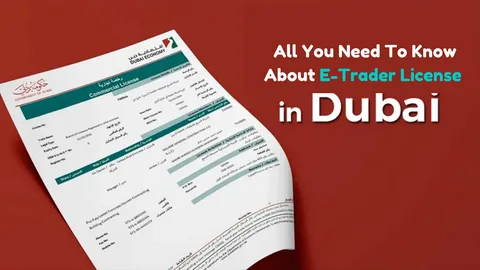In the world of packaging design and manufacturing, few components play as critical a role as the corrugated flute. This structural element not only defines the strength, durability, and performance of packaging boxes but also determines their weight, cost-efficiency, and eco-friendliness. As businesses increasingly shift toward sustainable packaging solutions, understanding corrugated flute types and their applications becomes essential for optimal product protection and brand presentation.
What Is a Corrugated Flute?
A corrugated flute refers to the arched paper layer that sits between two flat linerboards in a corrugated board. This unique design forms a fluted medium that provides cushioning, rigidity, and compression strength to packaging materials. The flutes create air pockets that absorb impact and protect products from external damage during shipping, storage, and handling.
Corrugated boards are categorized by their flute profiles, which vary in thickness, height, and density. Each type of flute serves a distinct purpose, offering a balance between protection, print quality, and space efficiency.
Types of Corrugated Flutes
There are several flute types used in packaging, each identified by a letter code representing its characteristics. The most common types include A, B, C, E, and F flutes, each designed for specific packaging needs.
A-Flute – The Original Heavy-Duty Option
Thickness: Approximately 4.8 mm
Flutes per Foot: 33
A-Flute is the thickest of all corrugated types, known for its excellent cushioning and stacking strength. It’s commonly used for fragile or heavy products, such as electronics, glassware, and industrial equipment. Its robust structure makes it ideal for shipping boxes that require superior protection against crushing and external pressure.
B-Flute – Compact and Versatile
Thickness: Approximately 3.2 mm
Flutes per Foot: 47
B-Flute offers a smooth surface that enhances printability while maintaining good compression resistance. Its thinner profile allows for tighter stacking, reducing storage space. It’s a popular choice for die-cut boxes, retail packaging, and point-of-purchase displays due to its balance between strength and presentation.
C-Flute – The Industry Standard
Thickness: Approximately 4 mm
Flutes per Foot: 39
C-Flute is the most widely used type in corrugated packaging. It combines excellent cushioning with high crush resistance, making it suitable for shipping containers, food packaging, and consumer goods. Its moderate thickness and durability provide a reliable solution for multi-purpose packaging needs.
E-Flute – Sleek and Print-Friendly
Thickness: Approximately 1.6 mm
Flutes per Foot: 90
E-Flute offers a fine and dense structure, making it ideal for premium packaging applications where print quality is crucial. It’s commonly used for cosmetics, electronics, and gift boxes, providing a professional appearance while maintaining lightweight strength.
F-Flute – Thin Yet Strong
Thickness: Approximately 0.8 mm
Flutes per Foot: 125
F-Flute is one of the thinnest flute profiles, designed for luxury packaging and retail displays. Its smooth surface allows for high-resolution printing, making it an excellent choice for branded boxes, subscription packaging, and cosmetic cartons that demand elegance and precision.
Double Wall and Triple Wall Corrugated Boards
For products that require extra strength and protection, manufacturers use multi-wall corrugated boards:
Double Wall: Combines two layers of fluting (e.g., BC or EB) for enhanced compression and stacking strength. Used in industrial packaging, appliance boxes, and heavy-duty cartons.
Triple Wall: Contains three layers of fluting, making it comparable to wooden crates in durability. Ideal for bulk shipments, automotive parts, and military logistics.
These configurations optimize performance for long-distance transportation and high-weight goods, ensuring the safety and integrity of packaged items.
How Corrugated Flute Impacts Packaging Performance
The flute profile directly affects a box’s performance characteristics. Understanding these relationships helps brands select the best material for their application.
1. Compression Strength
Larger flutes like A or C provide greater stacking strength, making them ideal for warehouse storage. Conversely, smaller flutes like E or F are better for retail packaging where space and aesthetics matter.
2. Cushioning and Shock Absorption
Thicker flutes trap more air, offering superior cushioning. This is critical for products sensitive to vibration and impact, such as electronics or glass items.
3. Print Surface and Visual Appeal
Smaller flute profiles (E or F) create smoother surfaces, allowing for crisp graphics and detailed branding. These are preferred in luxury or consumer-facing packaging.
4. Cost and Material Efficiency
The choice of flute can also influence production costs. For example, thinner flutes reduce material usage and shipping weight, offering cost savings without compromising performance.
Applications of Corrugated Flutes Across Industries
Corrugated flutes are used in nearly every sector that relies on packaging. Some notable applications include:
E-commerce: Lightweight E and B flutes ensure secure product delivery while maintaining branding consistency.
Food & Beverage: C and E flutes protect perishables and dry goods with moisture-resistant coatings.
Electronics: Double-wall boards provide impact protection during global shipping.
Retail & Display: F-flute and E-flute enable vivid printing for eye-catching displays.
Industrial: A-flute and BC double-wall boards handle heavy or bulk shipments efficiently.
Sustainability in Corrugated Packaging
As environmental awareness grows, corrugated flutes are being recognized for their eco-friendly advantages. Made primarily from recycled paper fibers, they are biodegradable, renewable, and recyclable. The use of sustainable adhesives and water-based inks further enhances their green profile.
Manufacturers are also innovating with lightweight fluting designs that reduce material consumption while maintaining strength, helping companies achieve carbon neutrality and sustainability certifications.
Choosing the Right Corrugated Flute for Your Business
Selecting the correct flute type depends on a combination of product size, weight, fragility, and branding goals. Here’s a quick guide:
Choose A-Flute for heavy or fragile products.
Opt for B-Flute for durability and compactness.
Go with C-Flute for standard shipping needs.
Use E or F-Flute for high-quality printed retail packaging.
Consider a Double or Triple Wall for industrial or export packaging.
By understanding these distinctions, businesses can strike the perfect balance between protection, cost, and aesthetics. You can order the best quality packaging boxes from custom designs boxes.
Conclusion
The corrugated flute remains a cornerstone of modern packaging, combining engineering precision, material innovation, and sustainable design. As technology advances, we can expect to see lighter, stronger, and more eco-conscious fluting solutions that cater to evolving market demands.
In a competitive marketplace, selecting the right corrugated flute type is not just a matter of protection; it’s a strategic decision that influences brand perception, cost efficiency, and environmental impact.






